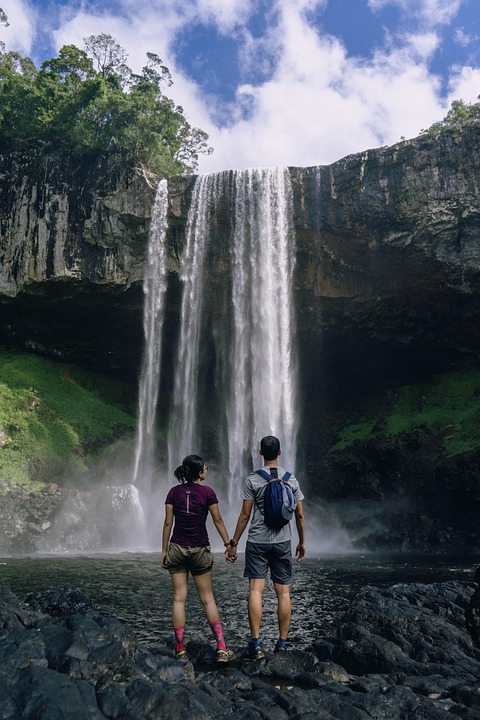
The Ultimate Guide to Planning Your First Backpacking Trip
Backpacking is an exhilarating way to explore the great outdoors, offering a blend of adventure and personal challenge. Whether you are planning a weekend getaway or a week-long trek, a well-organized backpacking trip can transform your experience from stressful to unforgettable. This ultimate guide provides you with all the necessary steps to successfully plan your first backpacking trip.
1. Choose Your Destination
The first step is to select a suitable destination. Consider the following factors:
- Experience Level: Choose trails that are appropriate for your skill level. Research local parks or beginner trails.
- Distance: For your first trip, it’s wise to stick to shorter trails, perhaps less than 10 miles round trip.
- Terrain and Weather: Research the terrain’s difficulty and the expected weather conditions during your trip.
2. Prepare Your Itinerary
Once you’ve chosen your destination, it’s time to prepare your itinerary:
- Plan Your Route: Use maps or GPS tools to plot your route and identify key landmarks.
- Understand Regulations: Familiarize yourself with park regulations regarding campfires, wildlife, and permits.
- Identify Resupply Points: Know if there are locations along the way where you can refill your water or resupply food.
3. Gather Your Gear
Your backpacking experience greatly depends on the gear you choose. Here’s a list of essential items:
Backpacking Gear Checklist:
- Backpack: Choose a pack that is the right size for your trip (40-70 liters is a common range).
- Sleeping System: A lightweight tent or hammock, sleeping bag, and sleeping pad.
- Cooking Supplies: Portable stove, fuel, cooking pots, and utensils.
- Clothing: Layered clothing suitable for the weather, including moisture-wicking base layers, an insulating layer, and waterproof outer layer.
- Hydration: Water bottles or a hydration reservoir, along with a water filter or purification tablets.
4. Food and Nutrition
Planning meals for your trip is crucial. Consider the following:
- Caloric Needs: Backpacking burns lots of calories, so ensure you’re packing enough food.
- Ease of Preparation: Opt for freeze-dried meals or high-calorie snacks that require minimal effort to prepare.
- Pack Smart: Use resealable bags to portion out snacks and keep your backpack organized.
5. Safety Considerations
Safety should be a priority when backpacking. Here are some safety tips to keep in mind:
- Leave No Trace: Adhere to the Leave No Trace principles to minimize your impact on nature.
- Know the Wildlife: Understand what wildlife you might encounter and how to safely coexist with them.
- First Aid Kit: Carry a basic first aid kit and know how to use the items it contains.
6. Practice Makes Perfect
Before you set out on your trip, consider doing a practice hike:
- Short Outings: Spend a night in your backyard or local park to test your gear and get comfortable with your pack.
- Trial Runs: Take a day hike with a weighted pack to simulate the conditions of your trip.
Conclusion
Planning your first backpacking trip might feel daunting, but with careful preparation and the right mindset, it can be one of the most rewarding experiences of your life. Remember to stay flexible, embrace the journey, and savor every moment in the great outdoors. Whether you’re making memories with friends or enjoying a solo adventure, the world of backpacking awaits!
FAQs
1. What is the best time of year for backpacking?
The best time generally depends on the location. Spring and fall often provide mild conditions and fewer bugs. Summer can be hot, while winter will require additional gear and skills.
2. How can I carry enough water on a backpacking trip?
Consider using a hydration reservoir or multiple water bottles. Research your destination to identify water sources along your route. Always carry a water purification system for safety.
3. What are the best food options for backpacking?
High-calorie, non-perishable foods such as nuts, energy bars, dehydrated meals, and canned goods are great options. Plan meals that are easy to prepare and require minimal cooking.
4. How do I know if I’m packing too much weight?
A good rule of thumb is to keep your pack weight at 20-25% of your body weight. Before your trip, make sure you can comfortably carry your pack during practice hikes.
5. Can I go backpacking alone?
Yes, solo backpacking is popular, but it’s essential to take extra safety precautions, share your itinerary with someone, and be prepared for emergencies. Always trust your instincts about safety.




